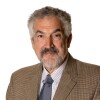It is likely that more Americans died yesterday due to acts of violence than on any other single day in American history.
Two parties are responsible for this sequence of atrocities. The moral blame falls exclusively on the perpetrators, who as of this writing remain unknown.
The tactical blame falls on the U.S. government, which has grievously failed in its topmost duty to protect American citizens from harm. Specialists on terrorism have been aware for years of this dereliction of duty; now the whole world knows it. Despite a steady beat of major, organized terrorist incidents over 18 years (since the car bombing of the U.S. embassy in Beirut in 1983), Washington has not taken the issue seriously.
Here are some of its mistakes:
Seeing terrorism as a crime. American officials have consistently held the view that terrorism is a form of criminal activity. Consequently, they have made their goal the arrest and trying of perpetrators who carry out violent acts. That’s all fine and good as far as it goes, but it does not go far enough. This legalistic mindset allows the funders, planners, organizers, and commanders of terrorism to continue their work untouched, ready to carry out more attacks. The better approach is to see terrorism as a form of warfare and to target not just those foot soldiers who actually carry out the violence but the organizations and governments who stand behind them.
Relying too much on electronic intelligence. It’s a lot easier to place an oversized ear in the sky than to place agents in the inner circle of a terrorist group, and so the Central Intelligence Agency and other information-gathering agencies have put on their headphones and listened. Clearly, this is not enough. The planning for the events that took place yesterday requires vast preparation over a long period of time involving many people. That the U.S. government did not have a clue points to nearly criminal ignorance. As critics like Reuel Gerecht keep hammering home, American intelligence services must learn foreign languages, become culturally knowledgeable, and befriend the right people.
Not understanding the hate-America mentality. Buildings like the World Trade Center and the Pentagon loom very large as symbols of America’s commercial and military presence around the world. The trade center was already once before attacked, in a bombing in early 1993. It should have been clear that these buildings would be the priority targets and the authorities should have provided them with special protection.
Ignoring the terrorist infrastructure in this country. Many indications point to the development of a large Islamist terror network within the United States, one visible to anyone who cared to see it. Already in early 1997, Steven Emerson told the Middle East Quarterly that the threat of terrorism “is greater now than before the World Trade Center bombing [in 1993] as the numbers of these groups and their members expands. In fact, I would say that the infrastructure now exists to carry off twenty simultaneous World Trade Center-type bombings across the United States.”
The information was out there but law enforcement and politicians did not want to see it. The time has come to crack down, and hard, on those connected to this terror infrastructure.
If there is any good to come out of yesterday’s deaths and trauma, it will be to prompt an urgent and dramatic change of course in U.S. policy, one that looks at the threat to the United States as a military one, that relies on human intelligence, that comprehends the terrorist mentality, and that closes down the domestic network of terror.
An easy assumption pervaded the airwaves yesterday that the morning’s horrors will have the effect of waking Americans to the threat in their midst. I am less optimistic, remembering similar assumptions eight years ago in the aftermath of the 1993 bombing of the World Trade Center. But that turned out not to be the wake-up call expected at the time. Perhaps because only six people died then, perhaps because the bombing was not accompanied or followed by other incidents, that episode disappeared down the memory hole. We owe it to yesterday’s many victims not to go back to sleep again.
We also owe it to ourselves, for I suspect that yesterday’s events are just a foretaste of what the future holds in store. Assuming that the attacks in New York and in the Washington area were only what they seemed to be, they killed and injured only those who were in the buildings under attack or in their immediate vicinity. Future attacks are likely to be biological, spreading germs that potentially could threaten the whole country. When that day comes, this country will truly know what devastation terrorism can cause. Now is the time to prepare for that danger and make sure it never happens.
Apr. 9, 2002 update: The Wall Street Journal received a Pulitzer price for its coverage on Sep. 12, 2001, of the events of the day before. The citation read:
For a distinguished example of local reporting of breaking news, Seven thousand five hundred dollars ($7,500). Awarded to The Wall Street Journal Staff for its comprehensive and insightful coverage, executed under the most difficult circumstances, of the terrorist attack on New York City, which recounted the day’s events and their implications for the future.
Apr. 26, 2013 update: Cliff Kincaid reprises my anger and frustration in an article almost twelve years later, this one about the Boston marathon bombing, “How Pothead Terrorists Almost Outsmarted the Police.” In short, despite the vast resources devoted to counterterrorism, nothing much has changed.







